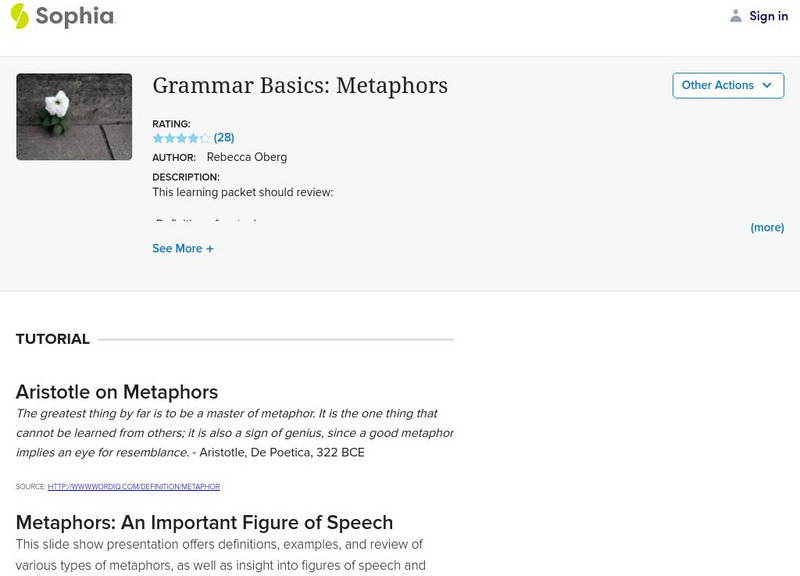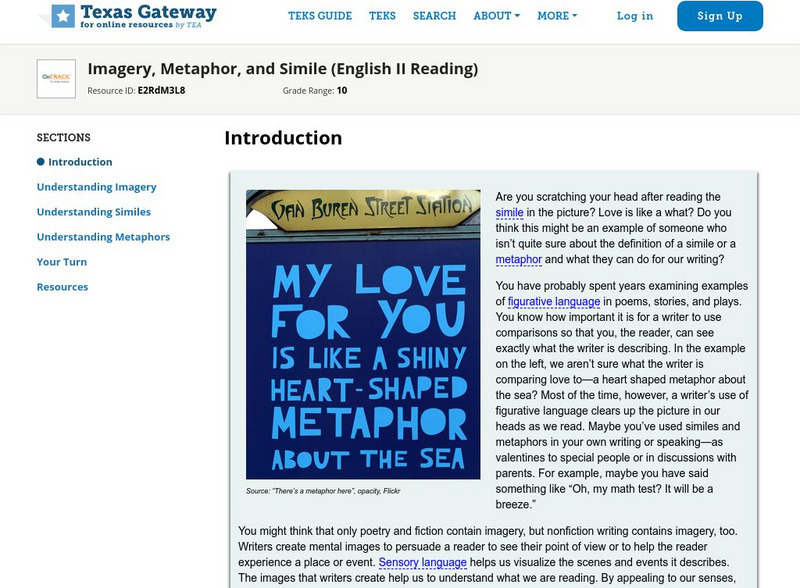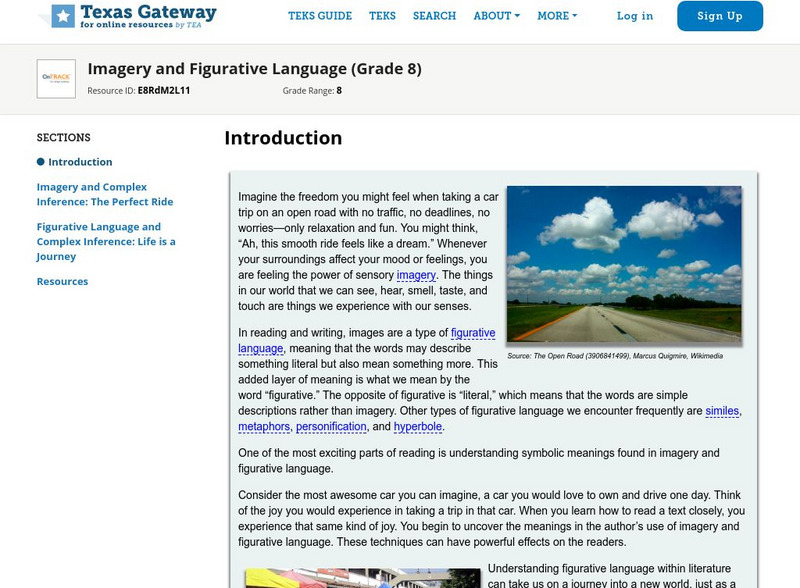Sophia Learning
Sophia: Grammar Basics: Metaphors
Learn about similes and metaphors through this multimedia presentation. First view a slide show describing different types of metaphors as well as a simile. Then watch a video [3:13] showing similes and metaphors used in popular songs. A...
Texas Education Agency
Texas Gateway: Literary Text: Imagery, Metaphor, and Simile
Writers use sensory imagery ("smelled the salty air"), similes ("like a strong man playing tug-of-war"), and metaphors ("the waves roaring in my ears") to capture the reader's imagination. In this lesson, you will learn how to identify...
Sophia Learning
Sophia: Grammar Basics: Metaphors
This tutorial focuses on metaphors using a PowerPoint presentation which offers definitions, examples, and various types of metaphors, as well as, similes for comparison. It provides two YouTube videos: the first includes popular songs...
Alabama Learning Exchange
Alex: Figurative Language
This lesson used a slideshow presentation to explain the difference between similes and metaphors. Students are challenged to identify these figurative elements in literature and then create some themselves.
Texas Education Agency
Texas Gateway: Imagery and Figurative Language (Grade 8)
In this lesson, students learn how to make complex inferences and use textual evidence such as imagery and figurative language to support understanding.
Read Works
Read Works: 3rd Grade Lesson: Poetry
[Free Registration/Login Required] A lesson in which students use two provided poems to learn to identify and understand the use of similes and metaphors in poetry. Lesson includes direct teaching, guided practice, and independent...
ReadWriteThink
Read Write Think: Figurative Language Awards Ceremony
Contains plans for five to seven lessons that teach about figurative language like similes, metaphors, and personification by asking young scholars to write award acceptance speeches that incorporate them. In addition to objectives and...
Love To Know Media
Your Dictionary: Literary Terms Lesson Plan
This is a lesson plan for teaching the seven literary terms used in poetry: simile, metaphor, alliteration, imagery, hyperbole, personification, and onomatopoeia.
ClassFlow
Class Flow: Metaphor & Simile
[Free Registration/Login Required] This flipchart helps students understand the use of metaphors and similes in written and spoken language. There are several fun examples, activities and whole group feedback using Activotes.
ClassFlow
Class Flow: Figurative Language
[Free Registration/Login Required] This resource explores figurative language including similes, metaphors, and personification. There are many activities used to support the exploration of each type of figurative language.









